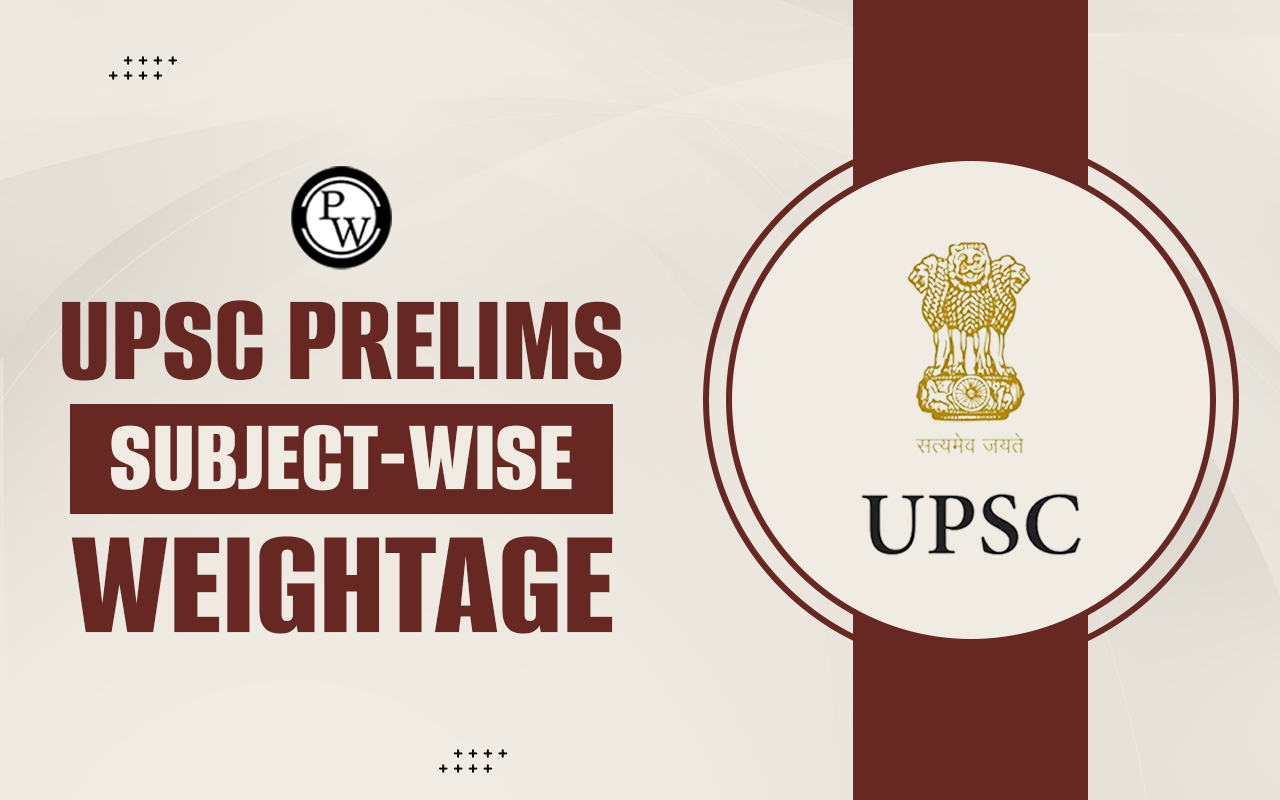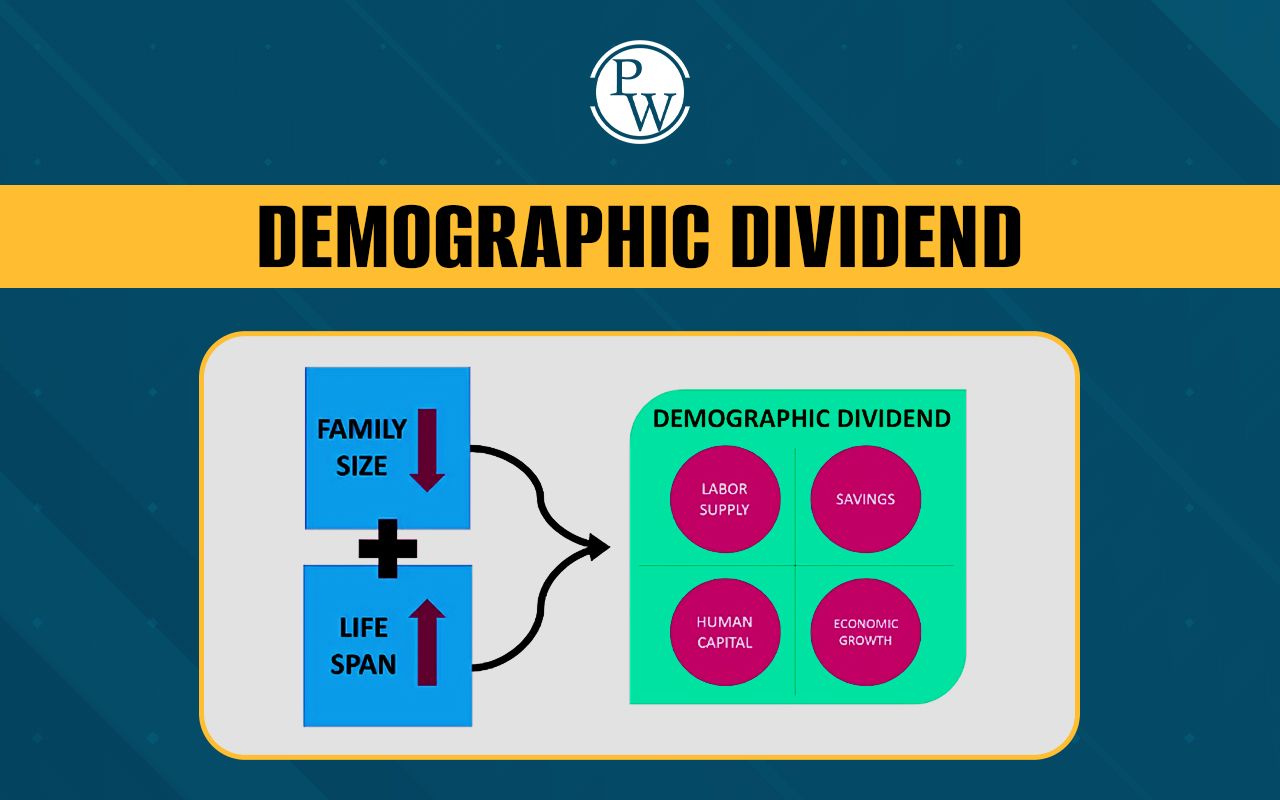

UPSC Prelims Subject-Wise Weightage refers to the distribution of questions across different subjects in the General Studies Paper I and II, helping aspirants identify the most frequently tested areas and prioritize their preparation accordingly. To increase your chances of success, understanding the UPSC Prelims Subject-Wise Weightage is essential. Read on to understand the breakdown of the subject-wise weightage, analyze the UPSC Prelims syllabus, and gain insights into UPSC Prelims preparation tips!
UPSC Prelims Subject-Wise Weightage 2025
The UPSC Prelims Subject-Wise Weightage 2025 refers to the distribution of marks across various subjects in the Civil Services Preliminary Examination. Understanding the subject-wise weightage is crucial for candidates to plan their preparation effectively. While the exact weightage for 2025 will be available after the exam on May 25th, candidates can use the previous years' weightage as a reference.
Previous Year's UPSC Prelims Subject-Wise Weightage
For candidates who are effectively preparing for UPSC Prelims, it is necessary to understand the UPSC Prelims Subject-Wise Weightage across different topics. Here's a breakdown based on previous years' trends:
1. History
| Year | 2024 | 2023 | 2022 |
| History | 9 | 13 | 16 |
History, particularly Modern History, is a critical part of the UPSC Prelims syllabus. Focus on significant events, freedom movements, and key personalities.
2. Geography
| Year | 2024 | 2023 | 2022 |
| Geography | 19 | 9 | 12 |
Geography has a significant presence in the UPSC Prelims question paper pattern. Key areas include physical geography, climate patterns, and maps.
3. Polity
| Year | 2024 | 2023 | 2022 |
| Polity | 18 | 14 | 13 |
Polity is another important area. Understanding the Constitution, its amendments, and governance structures is essential for your UPSC Prelims strategy.
4. Economy
| Year | 2024 | 2023 | 2022 |
| Economy | 15 | 14 | 17 |
Economy-related questions generally focus on understanding concepts like GDP, inflation, and government schemes. Keeping up-to-date with current economic affairs is essential.
5. Environment and Ecology
| Year | 2024 | 2023 | 2022 |
| Environment and Ecology | 10 | 21 | 17 |
With the increasing significance of environmental issues, this subject has gained dominance in the
6. Science and Technology
| Year | 2024 | 2023 | 2022 |
| Science and Technology | 9 | 5 | 14 |
Science and Technology questions test your awareness of recent advancements and their implications.
7. Current Affairs
| Year | 2024 | 2023 | 2022 |
| Current Affairs | 20 | 24 | 11 |
Current Affairs is an area where candidates need to stay updated continuously. The weightage of current affairs can vary, but it generally plays a significant role in the UPSC Prelims syllabus analysis.
UPSC Prelims Subject-Wise Weightage for CSAT
The table below presents the year-wise distribution of questions in the UPSC Prelims CSAT Paper (2011–2024) across five key subjects to help in analysing high-weightage topics:
| Year | Math & Basic Numeracy | Logical & Analytical Reasoning | Reading Comprehension | Data Interpretation | Decision Making |
| 2011 | 11 | 17 | 39 | 5 | 8 |
| 2012 | 3 | 28 | 40 | 0 | 9 |
| 2013 | 11 | 21 | 33 | 9 | 6 |
| 2014 | 20 | 23 | 31 | 6 | 0 |
| 2015 | 30 | 18 | 30 | 2 | 0 |
| 2016 | 31 | 21 | 28 | 0 | 0 |
| 2017 | 28 | 22 | 30 | 0 | 0 |
| 2018 | 18 | 22 | 26 | 14 | 0 |
| 2019 | 32 | 18 | 30 | 0 | 0 |
| 2020 | 42 | 12 | 26 | 0 | 0 |
| 2021 | 33 | 18 | 27 | 0 | 2 |
| 2022 | 25 | 22 | 30 | 0 | 3 |
| 2023 | 37 | 15 | 28 | 0 | 0 |
| 2024 | 25 | 18 | 27 | 10 | 0 |
How to Utilize the UPSC Prelims Subject-Wise Weightage in Preparation?
Here’s a strategy to make the most out of the UPSC Prelims subject-wise distribution:
- Prioritize High-Weightage Subjects: Based on the UPSC Prelims subject-wise weightage, allocate more time to subjects like History, Geography, Polity, and Economy. These subjects collectively cover a more significant portion of the paper.
- Focus on Current Affairs: Due to the dynamic nature of current affairs, daily reading newspapers and following reliable current affairs magazines is necessary.
- Revise Regularly: Subjects like Polity and Geography require regular revision to retain facts and concepts. Make use of short notes and mind maps for quick revision.
- Practice Previous Year Question Papers: Analyzing previous year's question papers helps in understanding the UPSC Prelims question paper pattern and prepares candidates for the actual exam.
- Practice with PW Marks Booster: Physics Wallah offers Prelims Marks Boosters, which help in time management and assessing preparation level. It helps in identifying weak areas that need more attention.
Understanding the UPSC Prelims subject-wise weightage is a critical aspect of your preparation strategy. By focusing on high-weightage subjects, staying updated with current affairs, and regularly practising with mock tests, you can enhance your chances of clearing the Prelims. Remember, consistency and dedication are key to cracking the UPSC Prelims.
Looking for guidance in UPSC preparation? Enroll in the online courses offered by Physics Wallah!
UPSC Prelims Subject-Wise Weightage FAQs
Q.1 Which subject has more weightage in UPSC Prelims?
Q.2 Which subject is most scoring in UPSC Prelims?
Q.3 Which subjects are most important for UPSC Prelims?
Q.4 How can I prepare for high-weightage subjects in UPSC Prelims?
Q.5 What is the best strategy for tackling current affairs in UPSC Prelims?








